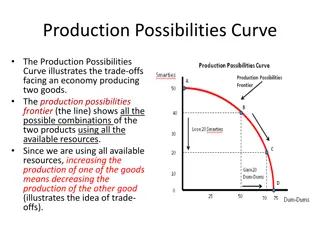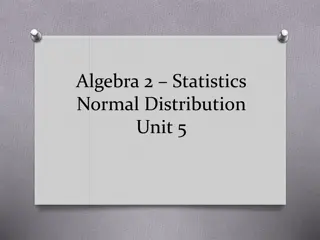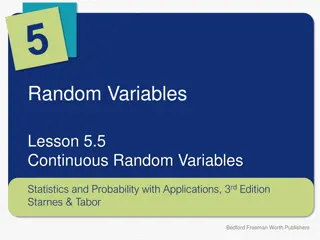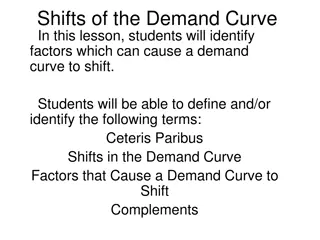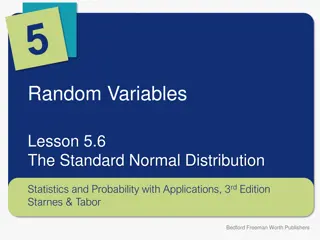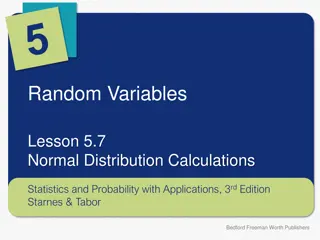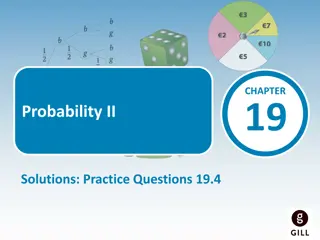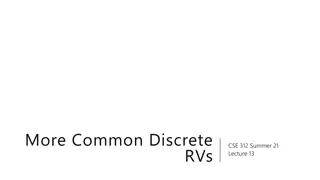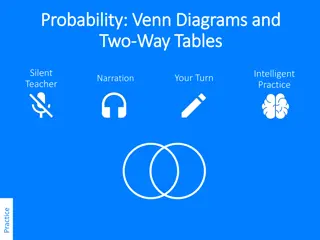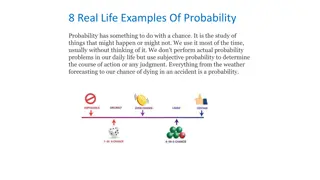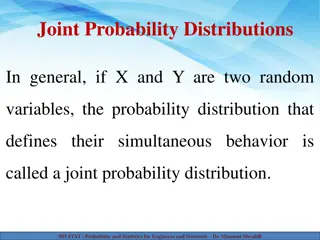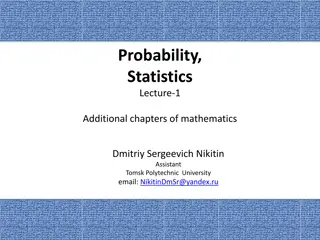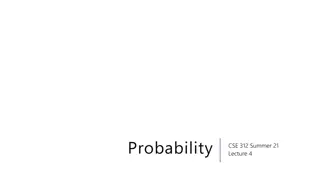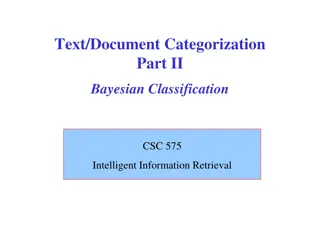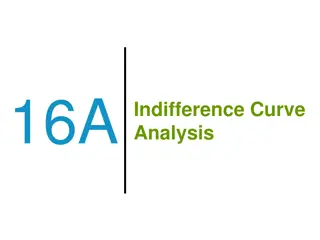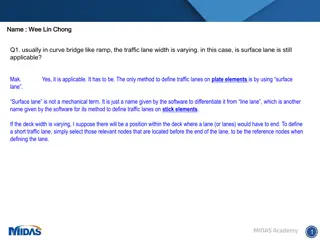Understanding the Normal Probability Curve
The Normal Probability Curve, also known as the normal distribution, is a fundamental concept in statistics. It is symmetric around the mean, with key characteristics such as equal numbers of cases above and below the mean, and the mean, median, and mode coinciding. The curve's height decreases gradually as you move away from the mean, and specific percentages of cases fall within different standard deviation ranges. Deviations from the normal curve can be observed in the form of skewness and kurtosis. The curve is commonly used as a model to compare various distributions.
Download Presentation

Please find below an Image/Link to download the presentation.
The content on the website is provided AS IS for your information and personal use only. It may not be sold, licensed, or shared on other websites without obtaining consent from the author. Download presentation by click this link. If you encounter any issues during the download, it is possible that the publisher has removed the file from their server.
E N D
Presentation Transcript
NORMAL PROBABILITY CURVE NORMAL PROBABILITY CURVE - CONCEPT, CHARACTERISTICS AND USES - Prepared by Dr. Sarmishtha Dutta
CONCEPT CONCEPT Normal probability curve is one type of theoretical distribution that is of immense use in Statistics. The normal distribution is a continuous probability distribution that is symmetrical on both sides of the mean. It is also called as the normal curve, the Gaussian curve and the Bell shaped curve or Mesokurtic curve. It is mainly computed for finding out average strength of the class, average marks and its distribution
CHARACTERISTICS CHARACTERISTICS It is symmetrical about the mean. The number of cases below the mean is equal to the number of cases above the mean. The mean and median coincide. The height of the curve is maximum at its mean. Hence, the mean and mode of normal distribution coincide. Mean , median and mode are equal here.
CHARACTERISTICS CHARACTERISTICS The height of the curve declines as we go in either direction from the mean. This dropping off is slow at first, then rapid and then slow again. The curve never touches the base line. Hence, the range is unlimited. The points of inflection are each plus or/and minus one standard deviation from the mean ordinate. The value of Ku= 0.263 Q1 and Q3 are equidistant from the median. When there is any Skewness in the distribution, the two distances will be unequal.
CHARACTERISTICS CHARACTERISTICS The height of the curve at a distance of one standard deviation from the mean is 60.7% of the height at the mean. The height of the curve at 2 and 3 standard deviation distances from mean is 13.5% and 1.1% of the height at mean respectively. The total interval from plus one standard deviation to minus one standard deviation contains 68.26% of the cases. 95.44% of the total area will be included between the mean ordinate and an ordinate 2 standard deviation from the mean . 99.74% of the total area will be included between the mean ordinate and a point 3 standard deviation away from the mean.
CONT. In cases where the scores of individuals in the group seriously deviate from the average, the curves representing these distributions also deviate from the shape of a normal curve. This deviation or divergence from normality tends to vary in two ways: Skewness and Kurtosis.
USES USES Used as a model to compare various distributions with it ,to say, whether the distribution is normal or not. to compare two or more distributions in terms of overlapping to distribute short marks and categorical rating. used to compute percentile and percentile ranks used to understand and apply the concept of standard error of measurement used for ability grouping used to convert raw scores into comparable standard normalized scores used to determine the relative difficulty of test items
References References Statistics in Psychology and Education S.K.Mangal Educational Psychology- Dr. G Das Monoboigyanik Porimap o Porisankhan- Dr. Arun Ghosh Mulyayon Niti o Koushal Sushil Roy https://www.simplypsychology.org/normal-distribution.html
THANK YOU THANK YOU











